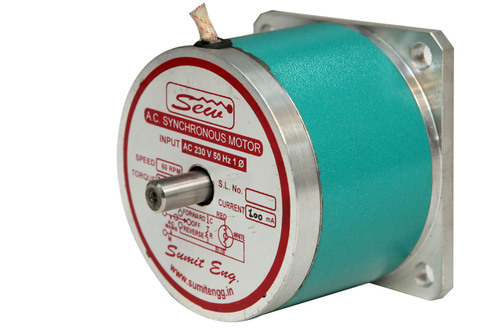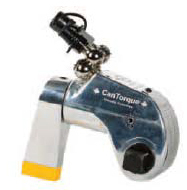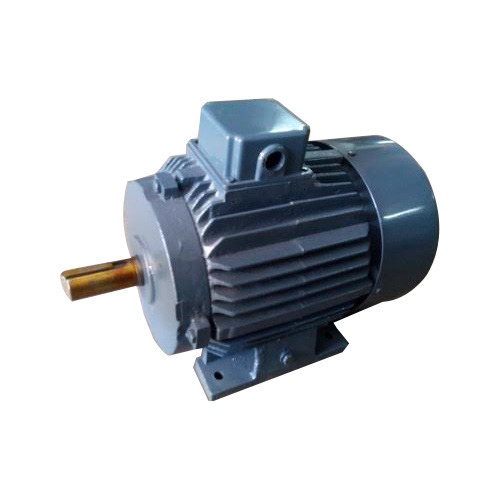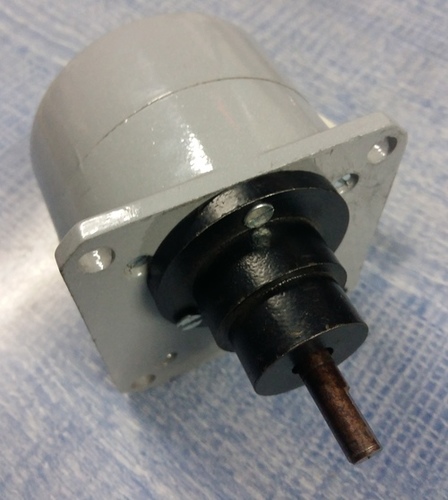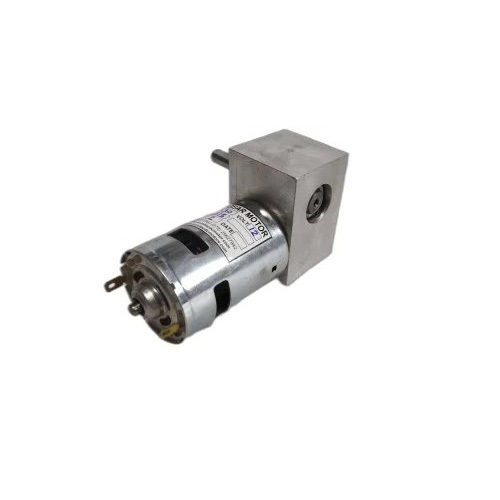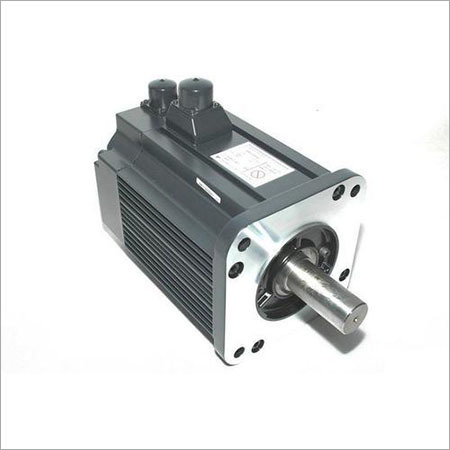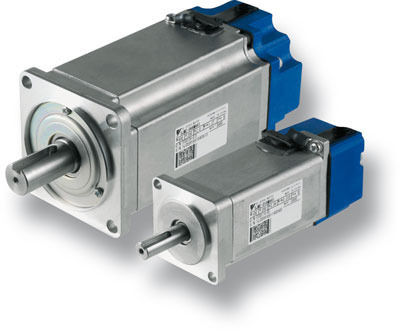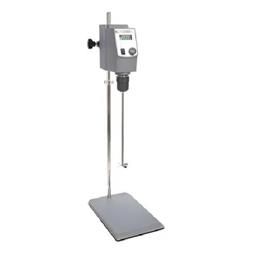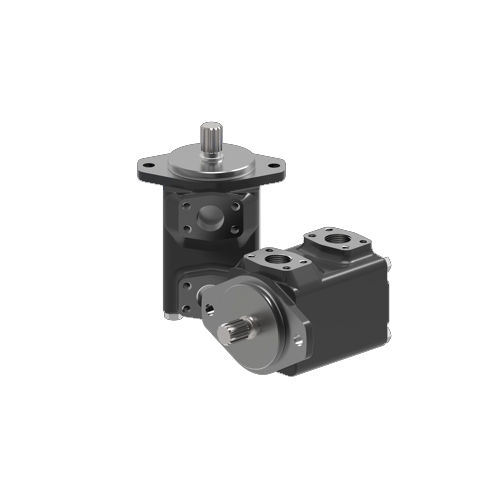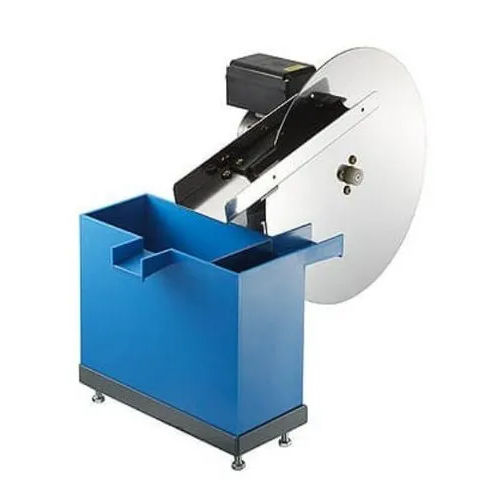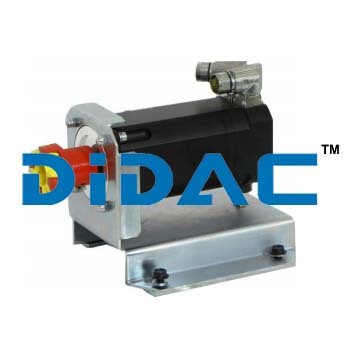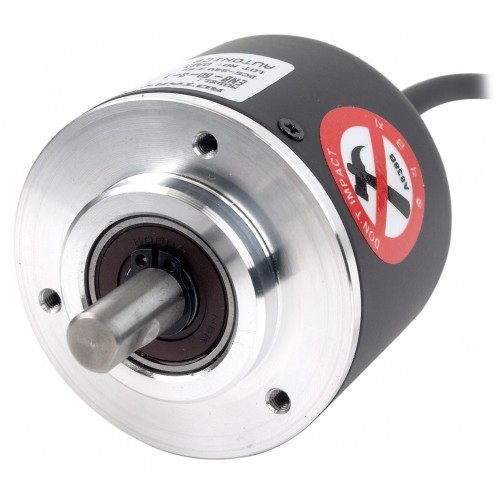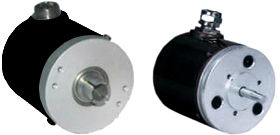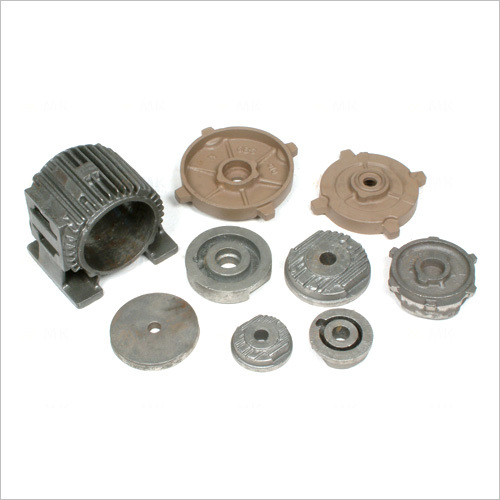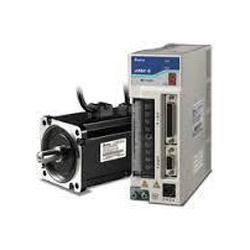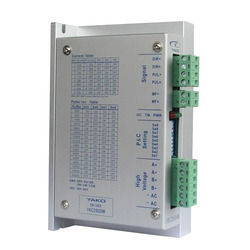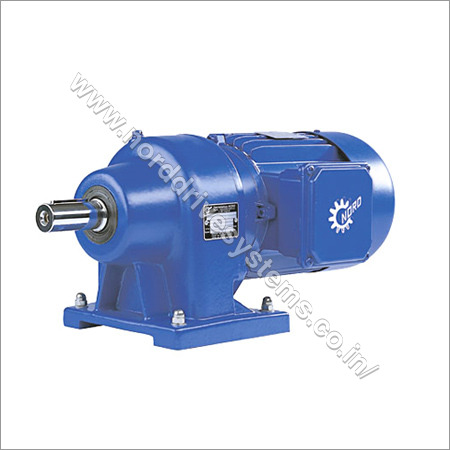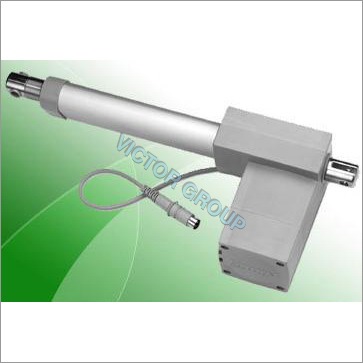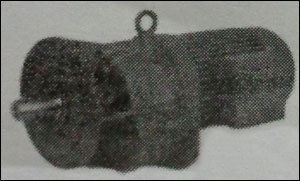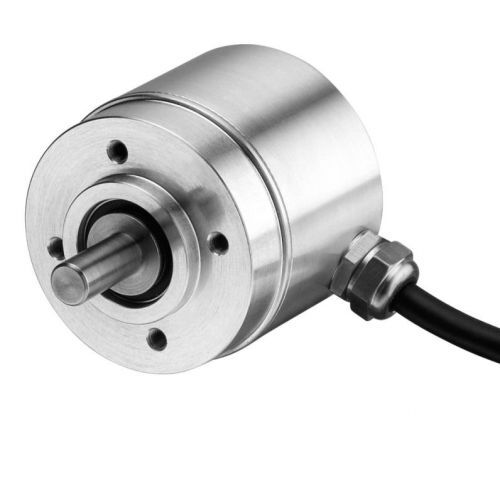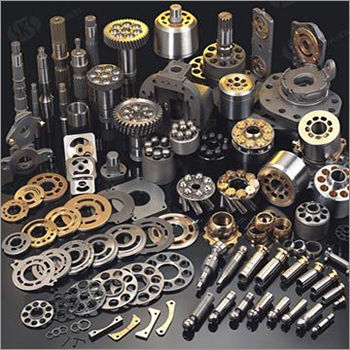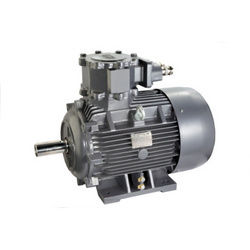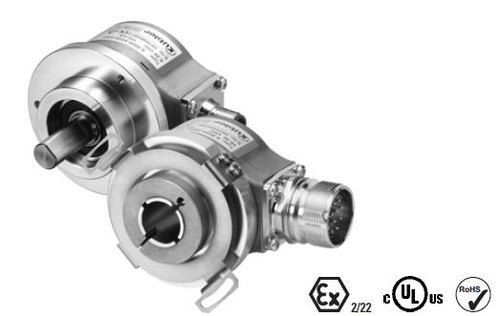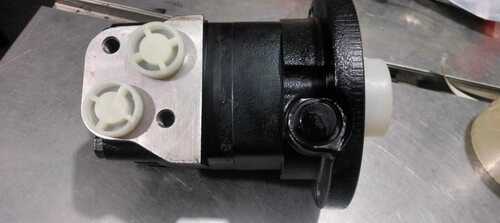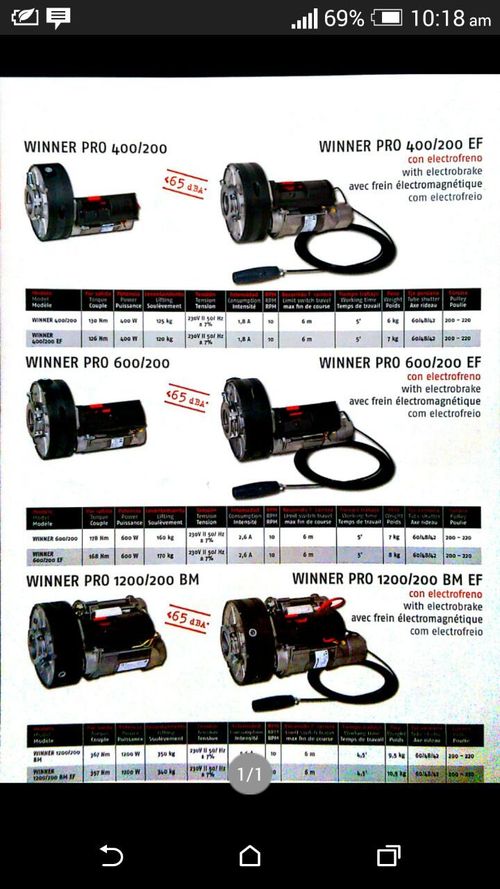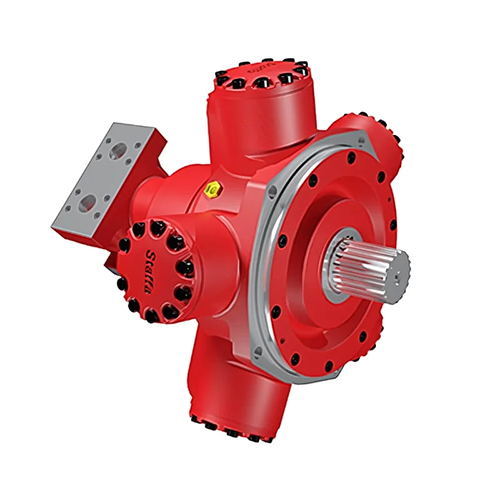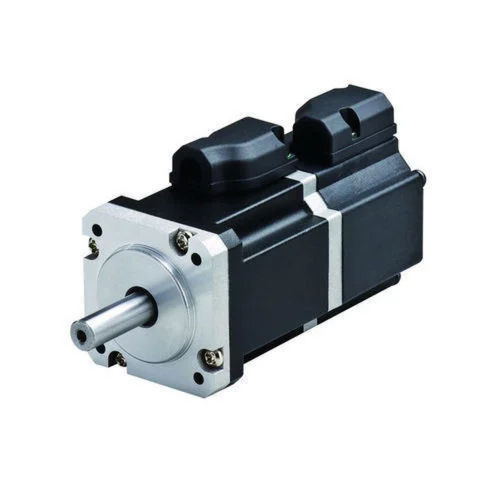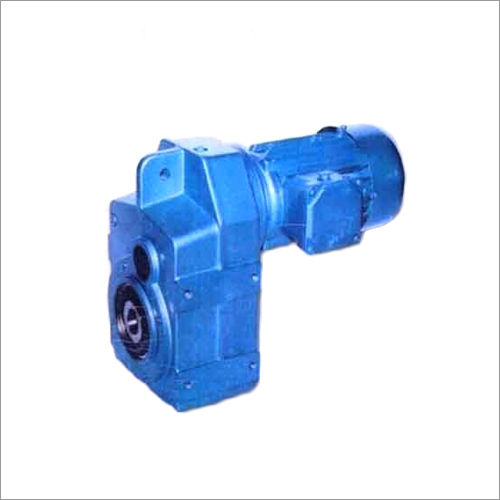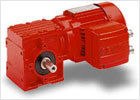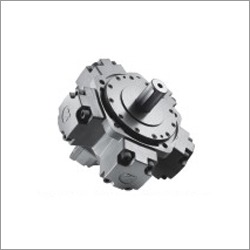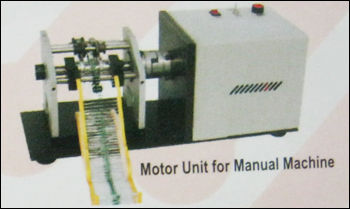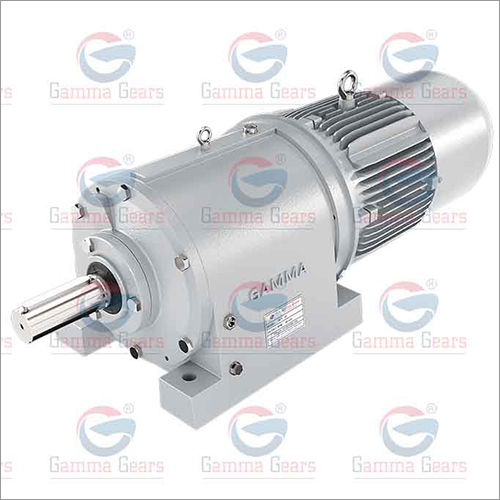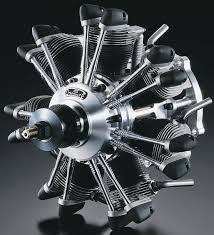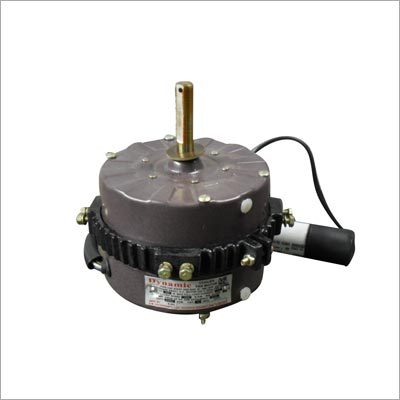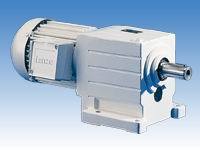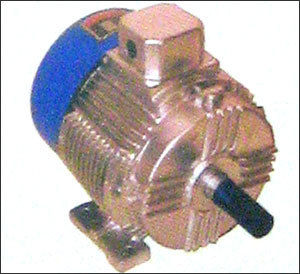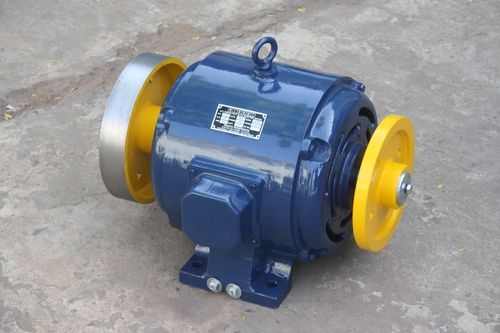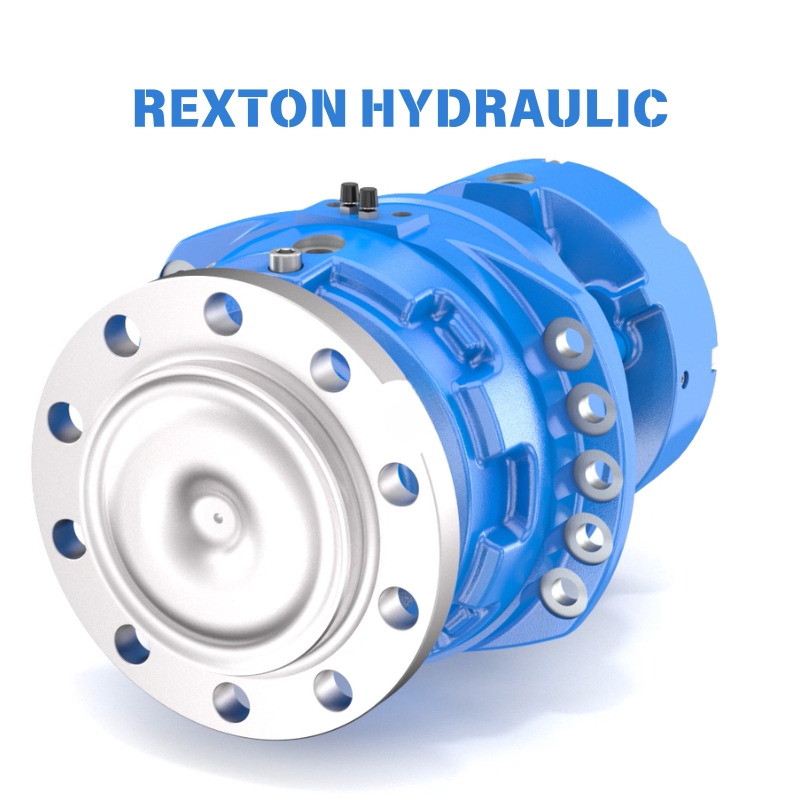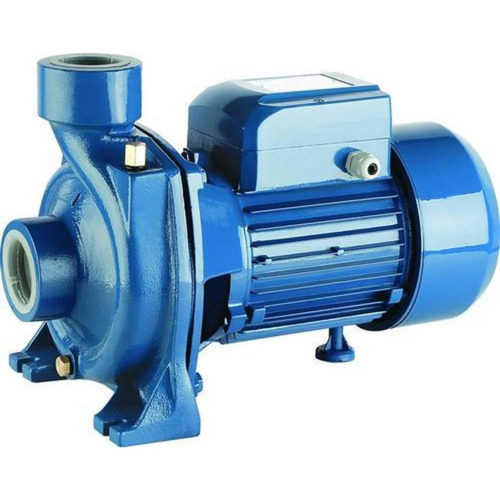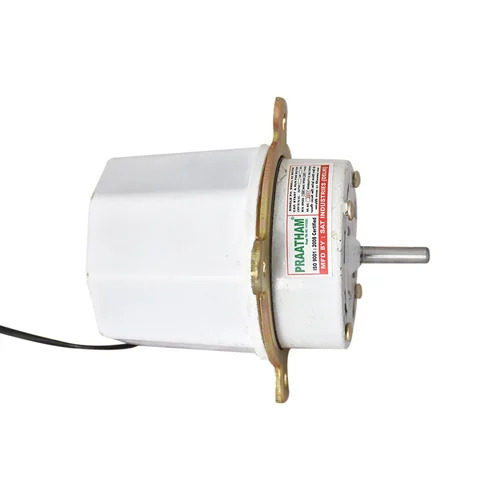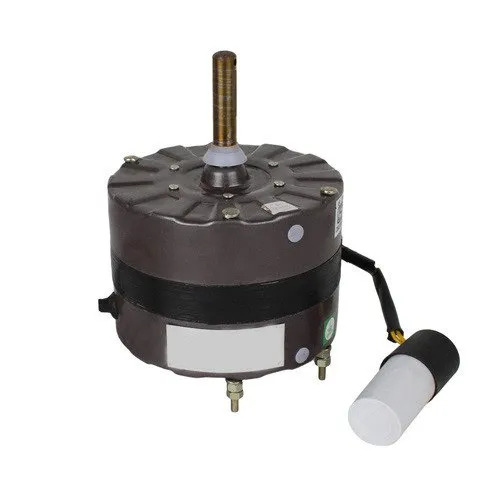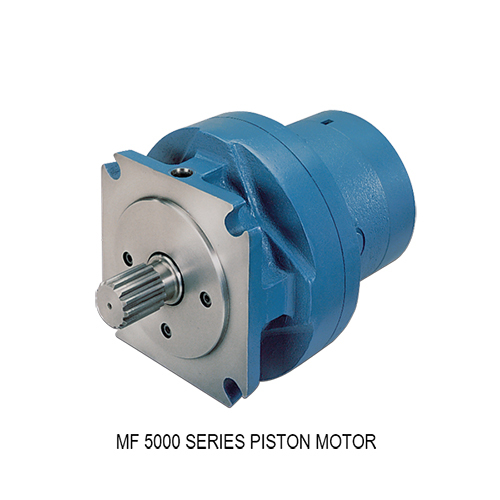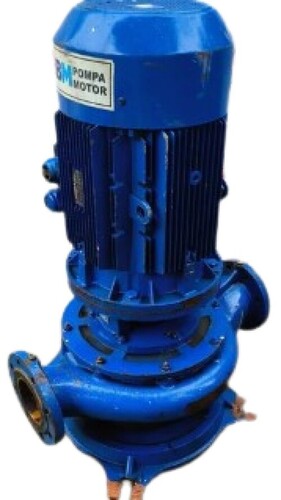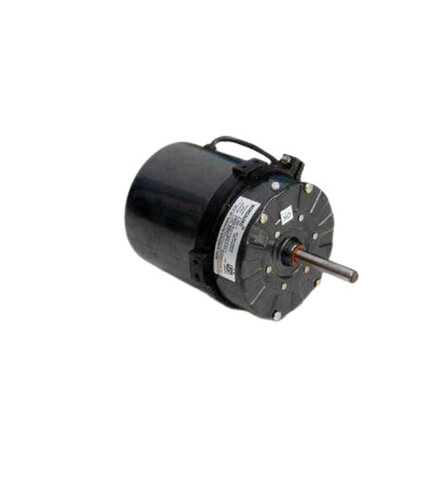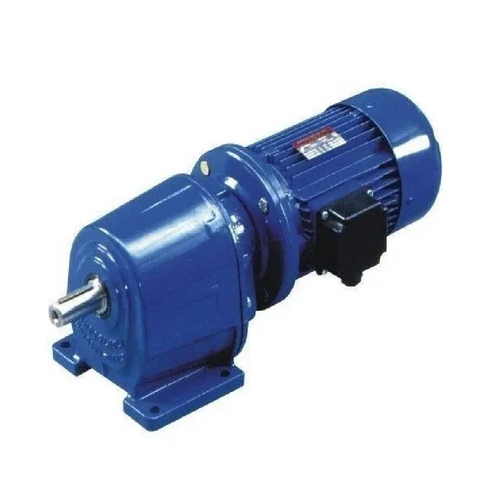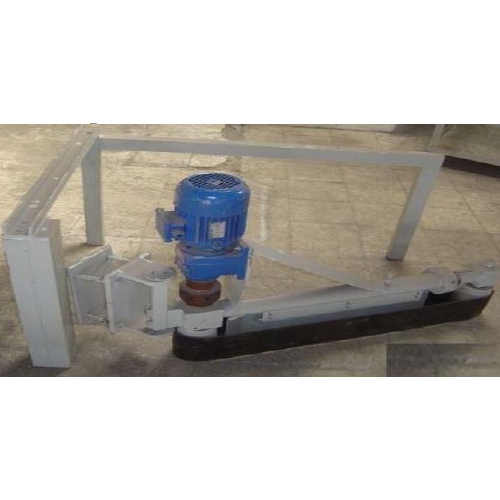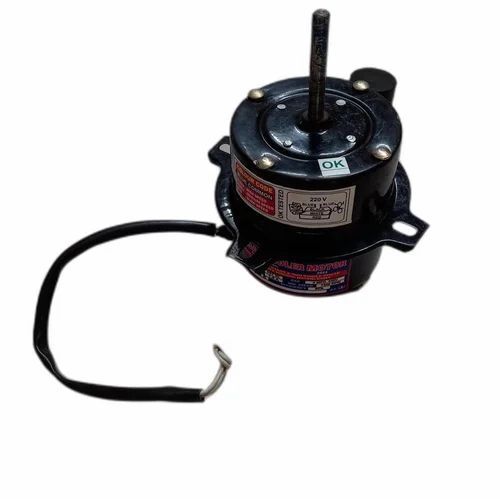Electric Motors & Engines
(13309 products)Product Showcase
Yaskawa Servo Motor - Efficacy: Ie2
Price: 50000 INR/Piece
MOQ1 , Piece/Pieces
Voltage270 VDC to 324 VDC, - 15 % to + 10 % Volt (v)
PressureHigh Pressure
Product TypeServo Motor
Frequency (MHz)50 Hertz (HZ)
PhaseThree Phase
EfficacyIE2
Mifa Systems Pvt. Ltd.
Ahmedabad
 Super Bonanza
Super Bonanza Trusted Seller
Trusted Seller18 Years
Servo System - High-Quality Components | Low Maintenance, Extremely Durable, Perfect Functionality
Product DescriptionWe are amongst one of the foremost organization engaged in Exporter, Importer, Manufacturer, Service Provider, Distributor, Supplier, Trading Company of Servo System in Ahmedabad, Gujarat, India. Our offered systems are used to control the position and speed of motor. Sourced from the certified ve
Procon Technologies Pvt. Ltd.
Ahmedabad
 Trusted Seller
Trusted Seller15 Years
 Super Premium
Super PremiumRemi Rq 40 Plus Direct Drive Stirrer, Model Number: RQ 40 Plus
Product DescriptionRemi Rq 40 Plus Direct Drive Stirrer
Remi Elektrotechnik Limited
Mumbai
 Super Premium
Super PremiumIndustrial Vane Motor - Frequency (Mhz): 50/60 Hertz (Hz)
Price: 51000 INR/Unit
MOQ10 Unit/Units
Sealed TypeMechanical Seal
Voltage220/415 Volt (v)
Rated Voltage220/415 Volt (V)
Rated Frequency50 Hertz (HZ)
Product TypeSynchronous Motor
Frequency (MHz)50/60 Hertz (HZ)
Suyojan Hydromechanical Systems Private Limited
Vasai
 Trusted Seller
Trusted Seller2 Years
 Super Premium
Super PremiumDisc Type Oil Skimmer
Price Trend: 18500.00 - 25500.00 INR/Box
MOQ1 Number
Rated Frequency50 Hertz (HZ)
Rated Voltage415 Volt (V)
Voltage415 Volt (v)
Ambient Temperature50 Celsius (oC)
Sealed TypeMechanical Seal
PressureModerate Pressure
J. D. Automation
Pune
 Trusted Seller
Trusted Seller10 Years
 Super Premium
Super PremiumBrushless Motor With Controller
Price: 1200000 INR/Pack
MOQ1 Pack/Packs
Supply Ability10 Per Month
Delivery Time10-30 Days
Packaging DetailsExport Worthy
Black And Silver Autonics Rotary Encoder E50S8-1024-3-T-1
Price: 5300 INR/Piece
MOQ1 Piece/Pieces
ColorBlack and Silver
Product TypeRotary Encoder , Other
Starting TypeElectric Start
Power5-24 Volt (v)
Dimension (L*W*H)50 Millimeter (mm)
Futuristic Technologies
Ahmedabad
 Trusted Seller
Trusted Seller14 Years
 Super Premium
Super PremiumOpto Electronics System
Product DescriptionWith the efforts of our professionals, we are able to manufacture superior quality Opto Electronics System. These Opto Electronics System are made from high quality of raw material which ensure durability at its user end. These product are available in market at competitive rates
Excella Electronics
Mumbai
 Trusted Seller
Trusted Seller5 Years
 Super Seller
Super SellerGrey Electric Motor Casting Parts
MOQ10 Kilograms/Kilograms
Poles Number4, 8, 6, 10, 12
PressureLow Pressure
Product TypeInduction Motor
PhaseSingle Phase
Starting TypeElectric Start
ColorGrey
M. K. Industries
Ahmedabad
 Trusted Seller
Trusted Seller17 Years
 Super Seller
Super SellerIndustrial Electric Motor - Color: Blue
Price: 10000/Piece
MOQ10 Piece/Pieces
Sealed TypePacking seal
ColorBLUE
Protect FeatureDrip-Proof
Starting TypeElectric Start
Creative Engineers
Ahmedabad
 Trusted Seller
Trusted Seller19 Years
 Super Seller
Super SellerDelta 750 Watts Servo Motors
Payment TermsOthers, Cash Advance (CA)
Supply AbilityOn Order Per Day
Delivery Time02 Week
Nano Technologies
Chennai
 Trusted Seller
Trusted Seller6 Years
 Super Seller
Super SellerStepper Drive
Product DescriptionWith the rich experience in market, we manufacture, export, trade and supply a extensive range of Stepper Drive in Ahmedabad, Gujarat, India. Our offered range of Stepper Drive is manufactured with the use of quality approved raw material and the state of the art technology under the supervision of
Standard Helical Geared Motors Efficiency: >95%
Gear TypeBevel Gears
MaterialIron
Gear Tooth ProfileHelical Gear
Efficiency>95%
Nord Drivesystems Pvt. Ltd.
Pune
 Premium Seller
Premium SellerBosch Linear Actuators
Price Trend: 1000.00 - 10000.00 INR/Piece
MOQ1 Piece/Pieces
Supply Ability1000 Per Month
Delivery Time1 Days
Victor Enterprise
Mumbai
 Trusted Seller
Trusted Seller13 Years
 Super Premium
Super PremiumDouble Stage Flange Mounted Gear Motor
Product DescriptionWe are able to offer a huge array of Double Stage Flange Mounted Gear Motors to our clients. These Gear Boxes are aesthetically designed and precision-engineered for their higher performance and durable work life. Moreover, all these Double Stage Flange Mounted Gear Motors are rigidly tested on vari
Dynamic Products
Mumbai
 Trusted Seller
Trusted Seller7 Years
 Super Seller
Super SellerLong-term Operational Industrial Use Absolute Encoder
Price: 25000 INR/Piece
MOQ2 Piece/Pieces
Product TypeOther, Absolute Encoder
Output Power5-10 , 10-30 Volt (v)
Protect FeatureWaterproof
Starting TypeElectric Start
Warranty1 Year
Hydraulic Motor Parts
Price Trend: 20000.00 - 55000.00 INR/Plant
MOQ1 Piece/Pieces
Product TypeOther, Motor Parts
Flame Proof Motors - Heavy-Duty, High-Performance | Ideal for Inflammable Atmospheres in Coal Mines, Chemical and Petrochemical Industries, Fertilizers, Pharmaceuticals, and Textiles
Product DescriptionWe are providing a wide range of Flame Proof Motors to our highly valued clients. Our products finds widely application in inflammable atmosphere in coal mines, chemical & petrochemical industries, fertilizers, pharmaceutical and textile industries. These are attainable at a very competitive market
Gujarat Plug-in Devices Pvt. Ltd.
Vadodara
 Trusted Seller
Trusted Seller12 Years
 Super Seller
Super SellerIndustrial Kubler Rotary Encoder
Product DescriptionBrand : Kubler\015\012Usage/Application : Industrial\015\012Encoder Type : INcremental\015\012Shaft Type : Shaft Hollow Shaft\015\012Resolution : Up to 36000 PPR\015\012Shaft Diameter : 8/6/10/12/14/15 mm\015\012\015\012We offer Encoder Kubler which are used for encoding the electricity into mechani
Orchid Technology
Ahmedabad
 Trusted Seller
Trusted Seller8 Years
 Super Seller
Super SellerDrum Gear Box Motor Frequency (Mhz): 50 Hertz (Hz)
Price: 20000 INR/Unit
MOQ1 Unit/Units
PressureHigh Pressure
Output Power220 Volt (v)
Frequency (MHz)50 Hertz (HZ)
WarrantyYes
Shree Adarsh Enterprises
Indore
 Trusted Seller
Trusted Seller4 Years
 Premium Seller
Premium SellerCenter Motor Somfy Group Phase: Single Phase
Price Trend: 5000.00 - 8300.00 INR/Piece
MOQ1 Piece/Pieces
Protect FeatureTotally Enclosed
PhaseSingle Phase
Vijay Shutter Enterprises
New Delhi
Kawasaki Hmf Staffa Radial Piston Motor - Output Power: 90 Horsepower (Hp)
Price: 30000 INR/Piece
MOQ1 Piece/Pieces
Output Power90 Horsepower (HP)
Rexton Hydraulic
Delhi
 Trusted Seller
Trusted Seller2 Years
 Premium Seller
Premium Seller2 Kw Panasonic Ac Servo Motor Phase: Double Phase
MOQ10 Unit/Units
Sealed TypeMechanical Seal
Protect FeatureDrip-Proof
PhaseDouble Phase
Starting TypeElectric Start
WarrantyYes
Cess Automation India Llp
Ahmedabad
 Trusted Seller
Trusted Seller2 Years
 Premium Seller
Premium SellerPbl Make Parallel Shart F Series Gear Box - Color: Blue
Price Trend: 15000.00 - 50000.00 INR/Unit
MOQ1 Unit/Units
Sealed TypeMechanical Seal
Frequency (MHz)50 Hertz (HZ)
PhaseSingle Phase
Starting TypeElectric Start
ColorBlue
Low Horse Power Gear Motors
Product DescriptionSPIROPLAN\302\256 gear motors are robust, single-stage helical-bevel gearmotors with SPIROPLAN\302\256 gearing. They have three main differences to the helical-worm gear units: the material combination of the steel-on-steel gearing, the special tooth meshing relationships and the aluminum housing.
Lakshmi Electro Controls & Automation
Bengaluru
 Trusted Seller
Trusted Seller19 Years
 Super Seller
Super SellerRadial Piston Motors - Durable Metallic Build | High Efficiency, Compact Design, Precision Engineering
Price: 10000.00 INR/Piece
MOQ1 Piece/Pieces
Supply Ability100 Per Week
Delivery Time3 Days
Pjs Engineers
Ahmedabad
 Trusted Seller
Trusted Seller9 Years
 Premium Seller
Premium SellerMotor Unit For Manual Machine
Product DescriptionOur customers can acquire from us, a range of Motor Unit for Manual Machine that is appreciated for noiseless operation in operation. It has been made from the excellent quality of raw materials with the assistance of our team of expert professionals. It is available to our clients at affordable pri
Yontro Mechatronic Systech
Gurugram
 Trusted Seller
Trusted Seller1 Years
 Premium Seller
Premium SellerHelical Geared Motor With Electric Motor For Conveyor Application Frequency (Mhz): 50/60 Hertz (Hz)
Price: 10000 INR/Unit
MOQ1 Unit/Units
Voltage240 Volt (v)
Product TypeHelical Geared Motor With Electric Motor For Conveyor Application, Other
Frequency (MHz)50/60 Hertz (HZ)
PhaseThree Phase
Starting TypeElectric Start
Gamma Gears
Ahmedabad
 Trusted Seller
Trusted Seller4 Years
 Super Seller
Super SellerLatest From Electric Motors & Engines
Shree Samarth Krupa Electric Motors & Engines
By:
Shree Samarth Krupa Enterprises
SD Electric Motors & Engines
By:
Sd Patel Motors
Electric Motors & Engines
By:
S. M. Enterprises
Garage Door Openers
By:
Maple Leaf Electrovacs & Access Systems Pvt. Ltd.
Helical Geared Motors Gst
By:
Lenze Mechatronics Pvt .ltd.
A. C. Alternators
By:
Topland Engines Pvt. Ltd.
Energy Efficient Motors
By:
Happy Engineering Pvt Ltd
Lift Duty Motors
By:
Riddhi Engineers
Explore More Cities
Ready To Ship Electric Motors & Engines
Explained Electric Motors & Engines
Simply put, an electric motor is a mechanism that uses electricity to generate mechanical motion. Most electric motors function as a result of the interaction between the magnetic field of the motor and the electric current in the wire winding. According to Faraday's Law, this interaction exerts a force on the motor's shaft in the form of torque.
Direct current (DC) sources, like batteries or rectifiers, can be used to power electric motors. Alternating current (AC) sources include things like power grids, electric generators, and inverters.
If it weren't for the invention of the motor, we'd still be using electricity for nothing more than powering light bulbs in the style of Sir Thomas Edison.
Vehicles, railroads, power tools, fans, air conditioning, home appliances, computer disk drives, and many more things all require electric motors. Even tiny motors can be found in some battery-operated wristwatches.
The History
In 1821, British scientist Michael Faraday described how a conductor carrying an electric current might be turned into a mechanical energy source by placing the wire in a magnetic field and using the torque created by the electrical current and field to cause the conductor to rotate.
One more British scientist, William Sturgeon, used his idea to create the first machine in 1832—a DC (Direct Current) machine, the most basic type of electric motor. However, his prototype was too costly for its limited utility.
The first electrical motor was created by physicist Frank Julian Sprague later in 1886. That could maintain a fixed rotational speed over a wide variety of loads, producing a driving force.
Types of Electric Motors and Engines
1. Stepper Motors
In stepper Electric Motors & Engines, the rotor is located on the inside and is controlled electronically by magnets on the outside. Permanent magnets or a flexible metal can be used to construct the rotor. When the windings are turned on, the teeth on the rotor line up with the magnetic field. Because of this, they can go from one location to another at a consistent rate. It's important to weigh the pros and cons of the various motors before beginning development on a new system. Picking the proper motor is a great first step in completing any task.
2. Servo motors
Servo motors are the workhorses of robotics, since they consist of any motor combined with a feedback sensor to aid in positioning. Actuators, both rotary and linear, are implemented. Although inexpensive brushed DC motors have been widely used up until recently, high-performance brushless AC motors are now the norm.
3. Liner Motors
These electric motors have a stator and a motor that have been unrolled, allowing them to generate linear force along the device's length. They differ from cylindrical designs in that their "active" section is flat and has two ends. In comparison to rotatory motors, they tend to be quicker and more precise.
4. Direct Drive
When traditional servo motors and transmissions are replaced with direct drive, the result is increased efficiency and decreased wear. These motors accelerate quicker and are much simpler to maintain over time.
5. DC Brushless Motor
DC brushless motors were originally designed to outperform DC brushed motors while taking up less room. They are also more compact than equivalent AC motors. When a slip ring or commutator is not present, an integrated controller is used to allow for operation.
6. DC Brushed Motors
Brush orientation on the stator of a DC brushed motor is what controls the direction of current flow. Instead, the orientation of the brush with respect to the individual segments of the rotor bar is critical in some types. Every DC brushed motor layout relies heavily on the commutated.
7. AC Brushless Motors
Popular in the field of motion control are AC brushless motors. The stator generates a spinning magnetic field, and the rotor is inducted into that field to cause simultaneous rotation. To function, they need constant access to electromagnets.
How To Choose The Best Electric Motors & Engines
1. Current
Since current provides the energy for the motor's operation, excessive amounts of it might cause malfunction. Operating and stall current are crucial for DC motors. The operating current of a motor is the average amount of power it is designed to use at a certain torque setting. As the name implies, stall current provides enough torque to keep the motor spinning at zero revolutions per minute (RPM). When multiplied by the rated voltage, this is the maximum power that the motor should be able to produce by drawing from the electrical supply. To prevent the coils from melting, a heat sink must be used when operating the motor continuously or at a voltage higher than the rated value.
2. Voltage
Its purpose is to prevent the flow of current from reversing and to overcome any existing back current. When the voltage is increased, the torque is also increased. The maximum recommended operating voltage for a DC motor is indicated by the motor's voltage rating. Always use the specified voltage.
Consider both the operating and stall numbers beside the torque. Stall torque is the amount of torque produced when power is provided at the stall speed, and operating torque is the amount of torque the motor is able to provide in normal operation.
3. Velocity
Calculating motor speed (in revolutions per minute) can be a challenge. Even while higher speeds are ideal for motor efficiency, they aren't always achievable due to the need for gearing. The motor's efficiency will go down if you add gears, so you'll need to think about slowing down and losing some torque.
4. Motor Function
Prioritizing motor performance took a back seat to understanding the factors of an application that could limit the motor type selection. Can you describe the function(s) of the motor in this context? The functionality of a motor can be evaluated in terms of its speed and torque, its starting/stalling torque, and its duty cycle or load profile. Motor size is determined in part by the speed and torque output needed to run the application.
5. Specifications of The Motor
When evaluating potential new projects, motor housing design is often one of the first factors to be thought about. As the designer, you need to know how much weight and space the product can take up in order to do its job.
A long, thin motor may be needed for one task, whereas a shorter, fatter motor may be more suited to another. The choice of motor might be impacted by whether or not the application requires a lightweight product.
Do you require a motor that runs for 10,000 hours without any maintenance, or will you only be using it for 200 hours over the next 20 hours? The brushes, the commutator, and the bearings are the primary potential failure points of a motor.
Environment
The vast majority of motors on store shelves are designed to operate in standard conditions. If the motor will be exposed to dust or water as a result of the project's specifications, the designer should think about using a motor designed for environmentally sensitive applications. An additional thing to think about while making your motor selection is the typical outside temperature.
How Electric Motors & Engines work
There are two approaches of working electric motors and engines. The first is to employ alternating current, a type of electric current in which the direction of flow alternates at regular intervals (AC). One better method is to attach a commutator to either end of the coil, as is done in battery-operated motors like the ones we use around the house. (Don't be put off by the useless technical name; this slightly dated word "commutation" is similar to the word "commute").
Much like how "commute" can indicate "to travel back and forth," "switch" simply implies "to alter." The commutator's primary function is to flip the direction of the electric current in the coil at regular intervals, typically every half turn of the coil's rotation.
Half of the commutator is connected to one end of the coil. The terminals on the motor are wired to receive power from the battery. Brushes, which can be formed from bits of graphite (soft carbon like pencil "lead") or thin lengths of springy metal, "brush" against the commutator to transfer electrical current. The commutator ensures that the coil always spins in the same direction when current is passed through the circuit.
Conclusion
As the name implies, electric motors use electricity to create motion. Most of them generate torque on the motor shaft by the interplay of the motor magnetosphere and electrical current in a coiled wire. The rotor and the stator are the heart and soul of any motor. They can be powered by either direct or alternating current. Induction motors, servo motors, three-phase motors, and industrial motors are just a few of the various varieties of electric motors available. They find application in a wide variety of vehicles, including electric ones, air conditioners, ships, and hydraulic machinery.
FAQs: Electric Motors & Engines
Q. What is the difference between engine and electric motor?
Ans. While a motor can only convert electrical energy into mechanical form, an engine can convert it along with multiple others.
Q. Why are electric motors better than engines?
Ans. Vehicles powered by electric motors are far more fuel efficient than those powered by conventional internal combustion engines (ICEs). When compared to a gas combustion engine, which converts less than 40% of its fuel into mechanical energy (in the form of motion), electric motors are more efficient.
Q. What are the pros and cons of electric motors?
Pros:
- Since they have more moving parts, electric motors last longer.
- Electric motors can operate for up to 30,000 hours with regular servicing.
Cons:
- Large electric motors are cumbersome to relocate and demand careful attention to the supply voltage and current.
- In other circumstances, remote areas without access to electricity require expensive line additions.
Q. Are electric engines better?
Ans. Yes, In addition to being more environmentally friendly, electric motors are also more productive.
Manufacturers & Suppliers of Electric Motors & Engines
Company Name | Member Since |
|---|---|
Creative Engineers Ahmedabad, India | 19 Years |
Lakshmi Electro Controls & Automation Bengaluru, India | 19 Years |
Mifa Systems Pvt. Ltd. Ahmedabad, India | 18 Years |
M. K. Industries Ahmedabad, India | 17 Years |
Khushali Enterprise Mumbai, India | 16 Years |
Procon Technologies Pvt. Ltd. Ahmedabad, India | 15 Years |
Nord Drivesystems Pvt. Ltd. Pune, India | 15 Years |
Remi Elektrotechnik Limited Mumbai, India | 14 Years |
Futuristic Technologies Ahmedabad, India | 14 Years |
Victor Enterprise Mumbai, India | 13 Years |
Popular Products
